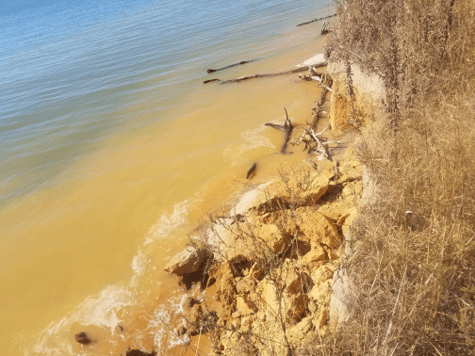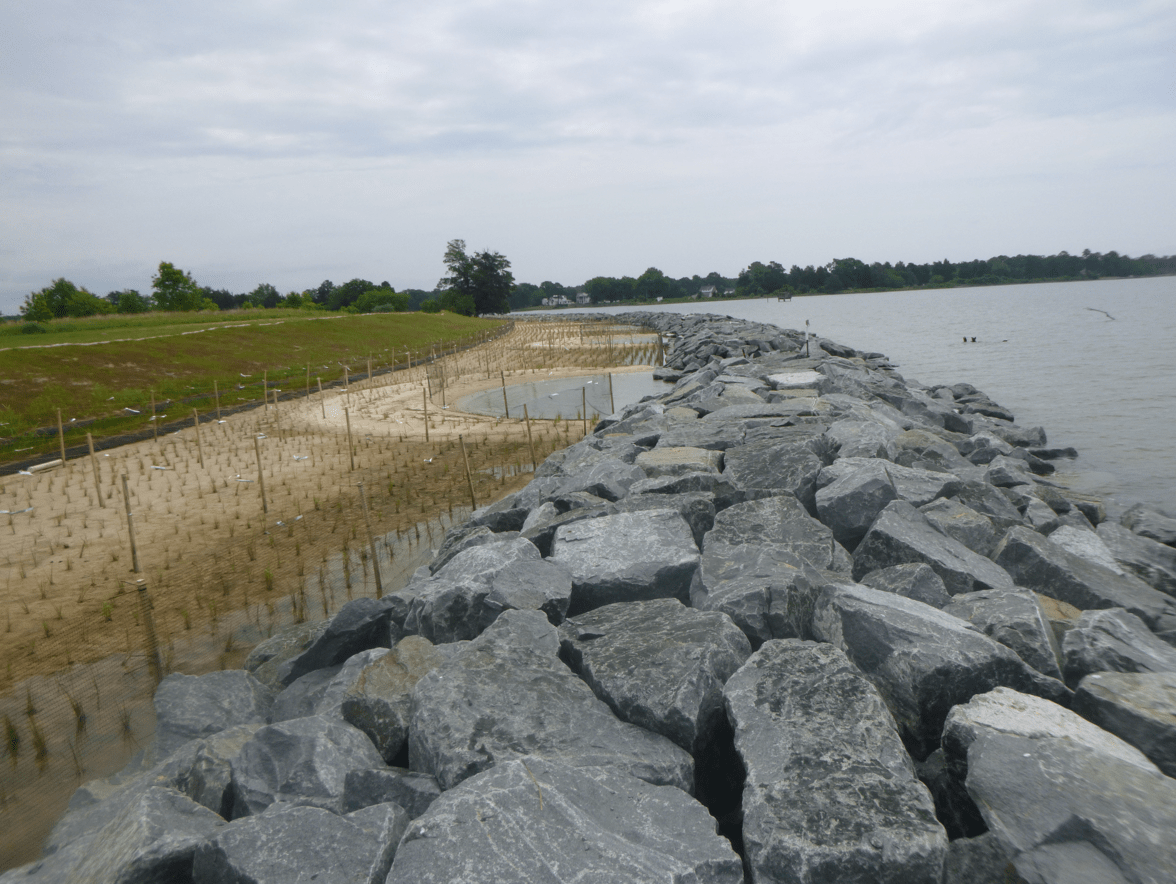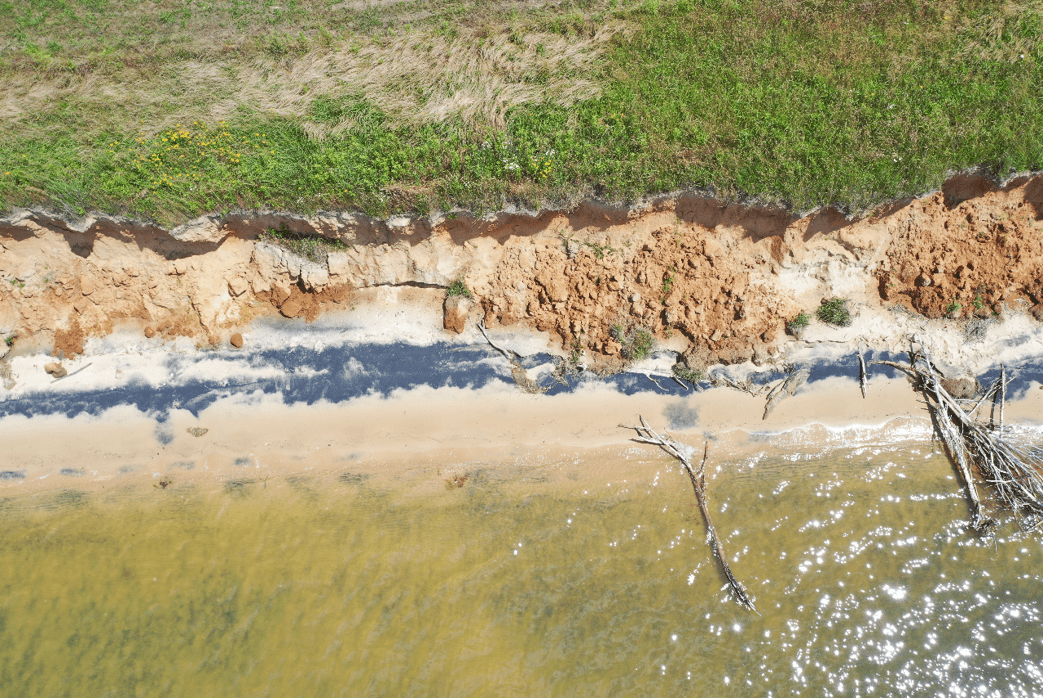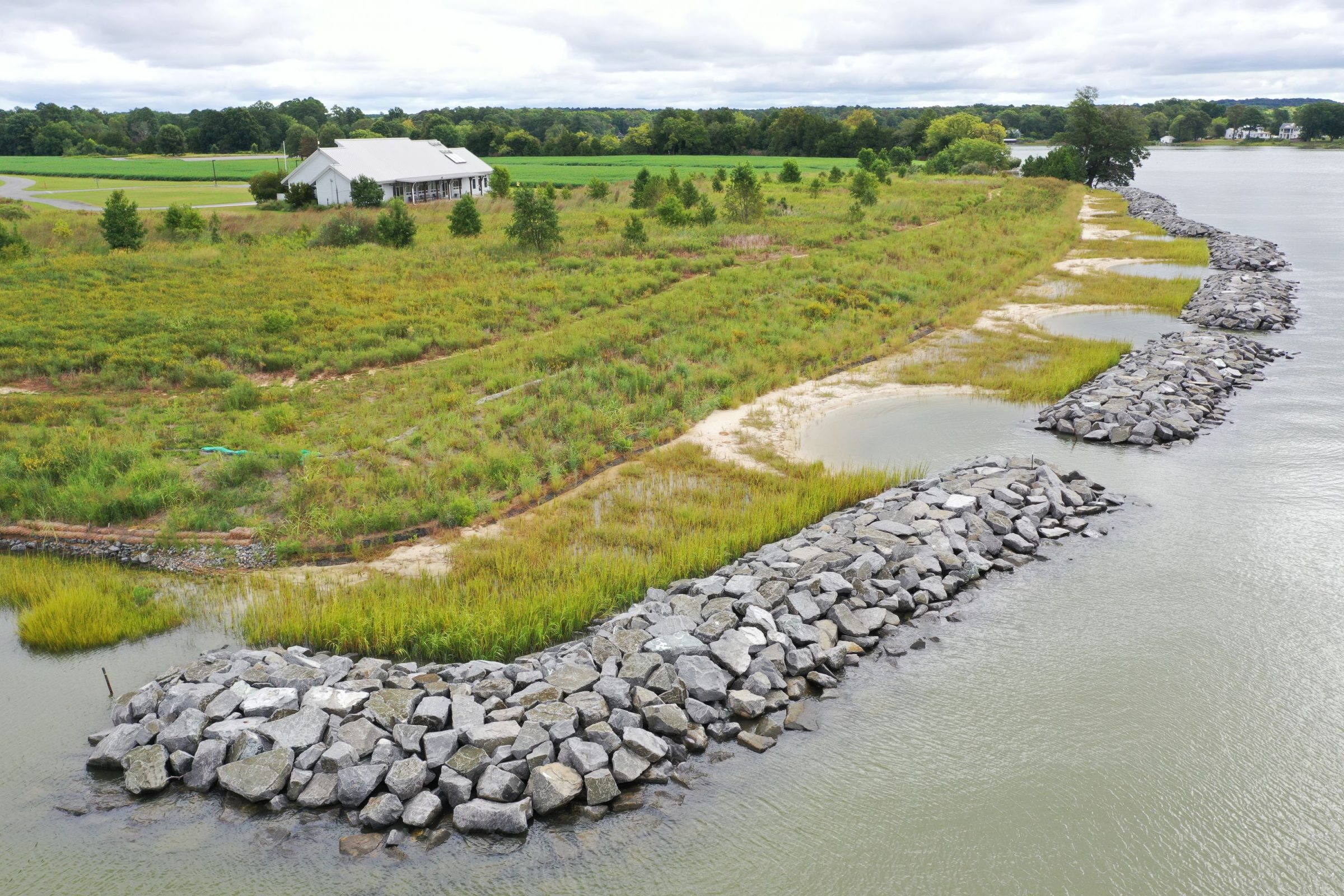Belle Isle State Park Shoreline Stablization
CONTACT


Prior to restoration, the shoreline was experiencing erosion rates up to 7.6’/year, leading to vertical, actively sloughing banks over 8’ tall in areas.



PROJECT SNAPSHOT
Project Type
Non-Bank ProjectLocation
Virginia | LancasterSolution
ResiliencyCredit Types
- Coastal prairie
- Tidal marsh
- Tidal wetland
Belle Isle State Park, located along the Rappahannock River, faced severe erosion behind its Visitor Center, with erosion rates reaching up to 7.6 feet per year. The project aimed to stabilize and protect approximately 1,000 linear feet of shoreline through the installation of rock structures and the creation of a tidal marsh.
RES designed and implemented eight offshore rock sill structures, which acted as breakwaters to reduce the wave energy eroding the shoreline. Behind these structures, RES established 0.6 acres of tidal marsh, densely planted with 12,000 tidal grass plugs. The vertical bank slopes were regraded to a gentler slope and planted with tidal scrub shrub plants and grasses. Additionally, upland areas behind the Visitor Center, impacted by construction, were planted with a meadow mix emphasizing species beneficial to pollinators. The entire project was designed to withstand large storm events and accommodate future sea level rise estimates.
The project began by removing invasive species and grading the land for the rock sill structures. After installing the rock sills, RES established the tidal marsh and planted both the vertical bank slopes and the upland areas. The project was completed in 2019.
This living shoreline approach effectively stabilized the shoreline, significantly reduced erosion, and provided additional ecological benefits. The project highlights the success of living shorelines as a sustainable and resilient alternative to traditional hard-armored shoreline stabilization methods.
Project Results
- Provides a more sustainable alternative to traditional hard-armored stabilization approaches
- Incorporates natural habitat elements for organisms
- Improved water quality functions Supplies shoreline protection
- Tidal marsh and planted areas serve as habitats for various wildlife species TMDL credits provided to client
- Educational opportunities for park visitors
